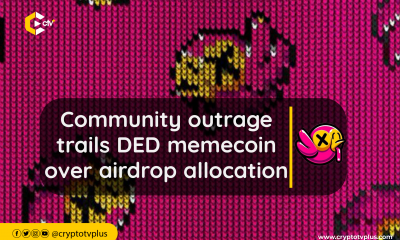News
Polkadot’s Q2 2023 in Review: Milestones, Metrics, and Future Outlook

In the second quarter of 2023, Polkadot experienced significant developments and milestones within the crypto industry.
Some of these include passing the SEC’s test on securities and commodities, the launch of a new governance system, improvement of parachains built on it, and more.
Polkadot is a blockchain network based on Nominated Proof-of-Stake (NPoS) consensus. It enables the creation of interconnected Layer-1 chains known as parachains.
Each parachain within the Polkadot ecosystem is built using Parity Technologies’ Substrate framework, which provides flexibility for developers to choose components suitable for their specific chain.
The Relay Chain serves as the base platform in Polkadot and does not support application functionality. Its main role is to house validators, ensuring security, governance, and connectivity for all the parachains.
In essence, Polkadot refers to the entire ecosystem of parachains that connect to the Relay Chain, allowing for interoperability and scalability across the network.
Launch of OpenGov model
One of the highlights of Polkadot in Q2 2023 is the launch of its new governance model called OpenGov. Polkadot’s new fully-decentralized governance model, OpenGov, introduces concurrent referenda, community-centred governance bodies, and enhanced delegation flexibility. This results in a more efficient and transparent decision-making process.
The system replaces the Council and Technical Committee with the Fellowship, ensuring decentralization through community voting and checks and balances.
OpenGov also introduces flexibility for delegation, allowing users to delegate voting power based on conviction and token commitment. The implementation is expected to drive increased usage of the treasury, benefiting the Polkadot community.
XCM V3 officially launched
Polkadot also introduced a new Cross-Consensus Message Format known as XCM V3. It brings advanced programmability, bridging with external networks, cross-chain locking, improved fee payment mechanisms, and support for NFTs into the blockchain.
This standardized messaging format facilitates interoperability and complex cross-consensus interactions between parachains and other consensus-driven systems. Despite a decrease in overall message count, active XCM channels expanded from 111 to 155.
In the race with the SEC on regulations, while other projects such as Cardano, and Solana, were listed as securities, Polkadot’s native token DOT was not listed as a security by the SEC, following the Web3 Foundation’s statement that it had morphed and was no longer considered a security after three years of discussions.
Acala and Moonbeam re-leased their parachain slots
One of the most important features of Polkadot is that it is designed to aid the development of parachains. In Q2, Moonbeam and Nodle were the two most successful parachains in the Polkadot ecosystem, while Astar, Acala, and Unique Network followed behind.
Parachains are an essential concept within the Polkadot ecosystem. They are individual blockchains that run parallel to the Polkadot Relay Chain and are interconnected through the shared security and consensus mechanism provided by Polkadot.
Other metrics and upcoming updates on Polkadot
In Q2, Polkadot’s market capitalization decreased by 16% from $7.74 billion to $6.24 billion. It ranked as the 12th largest crypto project by market cap and the fourth largest base layer protocol. Polkadot’s revenue for the quarter was $81,000, reflecting a 32% decrease.
It also maintained a consistent number of active validators at 297, with 97% (289 validators) holding stake amounts ranging from 1.6 million to 2.2 million DOT. The staking percentage for Polkadot was around 46%, with approximately 607 million DOT tokens staked out of the total supply.
Polkadot had a significant developer base, with 750 full-time developers and a total of 2,000 developers in the crypto industry at the end of Q2. The ecosystem averaged 295,000 monthly active users, including extrinsic signers and token receivers.
Upcoming updates for Polkadot include System parachains, Asynchronous backing, and Parathreads.
Read also;
Grayscale advocates that SEC Denial of a Spot ETF is arbitrary

























1 Comment